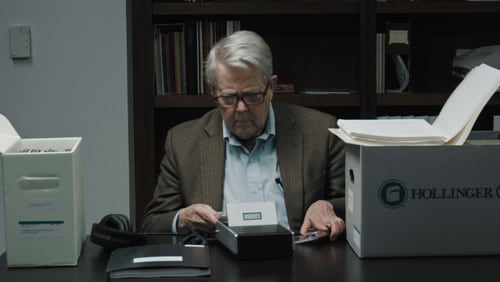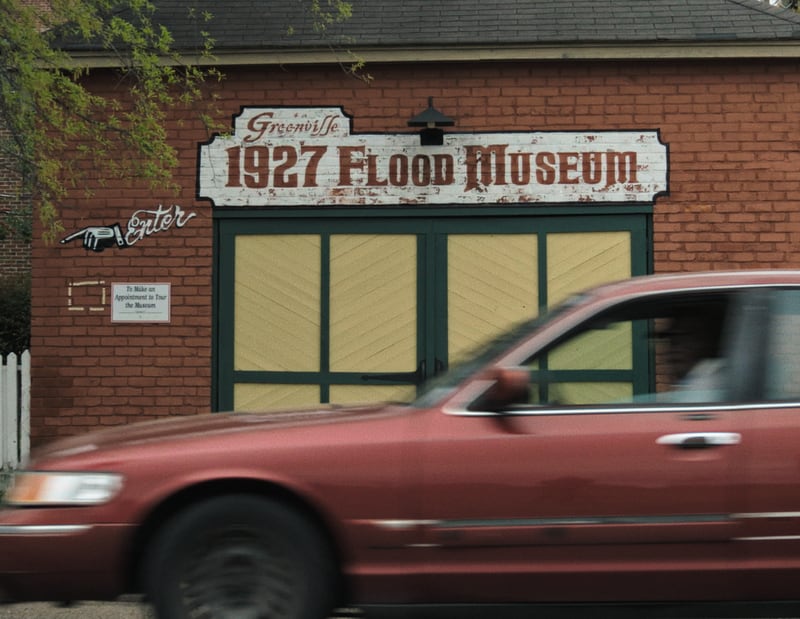This story was originally published by ArtsATL.
The short documentary film ”It’s in the Voices,” a part of the PBS Reel South series, paints a stunning picture of Greenville, Mississippi, through the stories collected by the Washington County Oral History Program. The film is by Emmy Award-winning producer Field Humphrey, who has deep Southern ties. He grew up outside of Atlanta and is a graduate of Roswell High School.
Through the course of his documentary, viewers are introduced to Clinton Bagley and his collaboration with Daisy Greene, a retired school teacher. The film opens with Bagley, perfectly cast as the narrator with his silver hair and brown blazer. He looks every bit the part of a Southern historian and introduces himself as a seventh-generation Mississippian.
However, it is Greene who’s the anchor of “It’s in the Voices.” Though we only meet her through her recorded voice, she is an almost ethereal presence woven throughout the film. In his narration, Bagley details how their paths became intertwined, and the result was the Washington County Oral History Program.
“Pigeon Dropping” was the colorful term that Greene used, according to Bagley, when she met him in 1975. The term suggests the dynamic of individuals making money and profiting off the stories of regular folks. She was skeptical of him — and he knew it — and unsure of his motives. The filmmakers anticipated that Greene’s initial skepticism of Bagley in the documentary might mirror the skepticism of the audience watching on PBS. To win the audience over, they would have to both show and tell how Bagley built trust with Greene. And this works, since the documentary is, in part, the story of a friendship across lines of racial difference in a Southern town.
Credit: Courtesy of Reel South
Credit: Courtesy of Reel South
The Mississippi of “It’s in the Voices” is represented through sound, stories and archival images. Yearbook photos, an empty school auditorium and photos of the river reinforce Greene’s gorgeous storytelling and Bagley’s skillful narration. The film is absolutely aware of how Mississippi is represented and mythologized. Both the Civil War and Civil Rights are invoked, but the narration and editing work closely together to examine woven narrative threads of history and horror. Thus, the narration, which is framed largely around Bagley’s point of view, doesn’t clash much with the film’s oral history — rather, they enhance each other.
There is considerable attention paid to the technical process of oral history creation, and this is done superbly. We get authentic clicks of the cassette player and the static and crunches of the audio recordings. We get visual footage of Bagley with his headphones on, listening to the voices. Sound is used in the film to create an almost immersive experience. This technique is particularly impactful because it serves to create intimacy between filmmaker and audience.
What may raise questions for some viewers is the role of history and historical context in the documentary. Bagley, a white man, and his perception of Greenville as a progressive melting pot may seem far too simplistic. To the credit of the filmmakers, they present counter-testimony through Greene, who describes that Greenville was not as progressive as Bagley suggests and was not at all disconnected from racism. She describes the racism of the health care system and educational segregation of the town. These perspectives don’t function to contradict each other, since both Bagley and Greene are transparent about their differences. However, viewers may find themselves wanting more discourse on racial justice.
Credit: Courtesy of Reel South
Credit: Courtesy of Reel South
Greene’s calm retelling of her experience during the 1927 flood is particularly jarring. She was a part of a group of Black folks attempting to escape the flood on an oil barge headed for Vicksburg. Once their group arrived, they were detained because a white man demanded they sing for him before he let them off the barge. The group refused to sing, meeting his attempt at racial humiliation with defiance.
“Voices” concludes with Bagley suggesting how, in the 1970s, the thriving industries of Greenville began to change, and the factories and air base closed. This gives the oral history project a sense of urgency, and we understand that his pursuit and passion for the stories felt even more critical. The world was changing. The town was changing. Much about the area that was loved and cherished, even painful parts, was coming to an end. The multiple visual references to water and the river feels especially poignant in the film, not only to represent the Mississippi Delta but to convey the passage of time.
“It’s in the Voices” provides an important, necessary contribution to how the lives and experiences of people in the South are represented. Through Greene in particular, the viewer gets a portrait of the town that doesn’t ignore the racist past; she understood white supremacy with both moral clarity and sociological detachment. Through her stories, Greene elevates the legacy of Black courage and Black dignity, stitched seamlessly into the narrative fabric of the town. It is in these voices — more than the flowing rivers, the lush landscapes and the once-thriving industries — that we see how extraordinary Greenville, Mississippi, really is.
TV REVIEW
“It’s in the Voices”
Now available via PBS.org or on the PBS app.
::
Charles Stephens is an Atlanta-based writer. His work has appeared in publications such as Atlanta magazine, Creative Loafing, The Atlanta Journal-Constitution, Georgia Voice, The Advocate and Them.
Credit: ArtsATL
Credit: ArtsATL
MEET OUR PARTNER
ArtsATL (artsatl.org) is a nonprofit organization that plays a critical role in educating and informing audiences about metro Atlanta’s arts and culture. ArtsATL, founded in 2009, helps build a sustainable arts community contributing to the economic and cultural health of the city.
If you have any questions about this partnership or others, please contact Senior Manager of Partnerships Nicole Williams at nicole.williams@ajc.com.
About the Author









